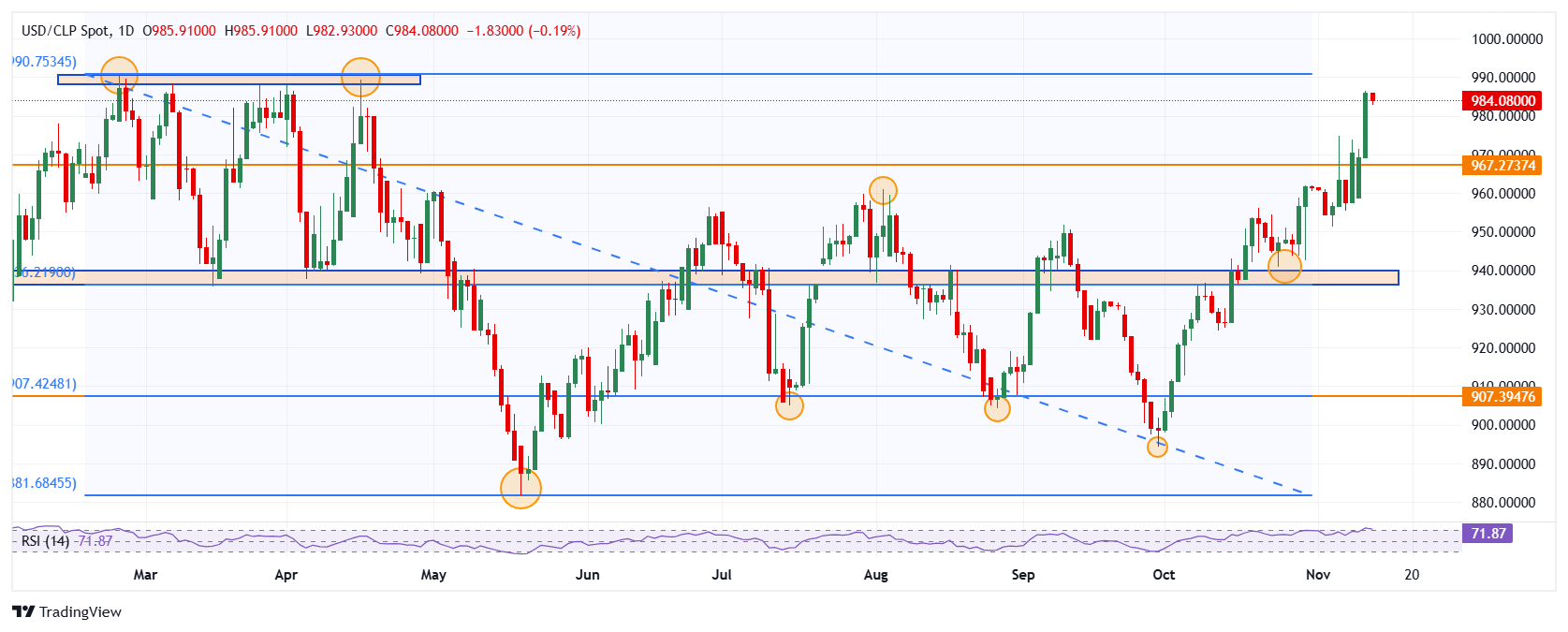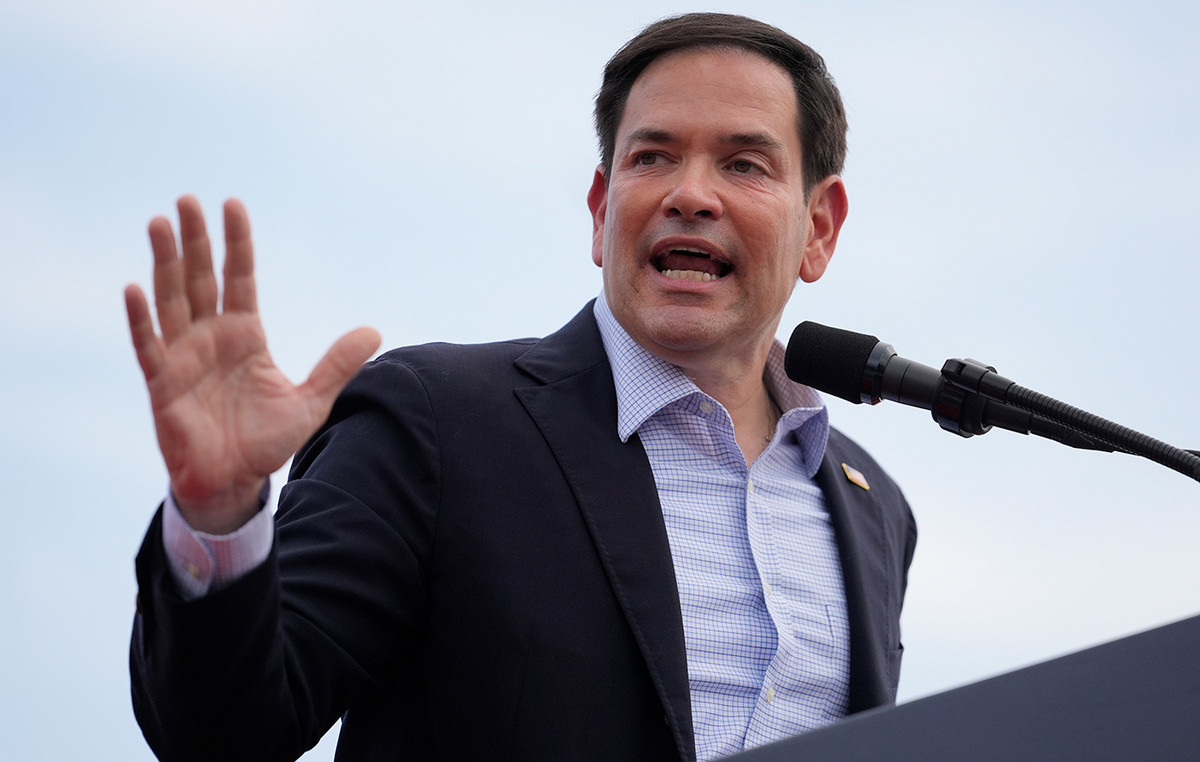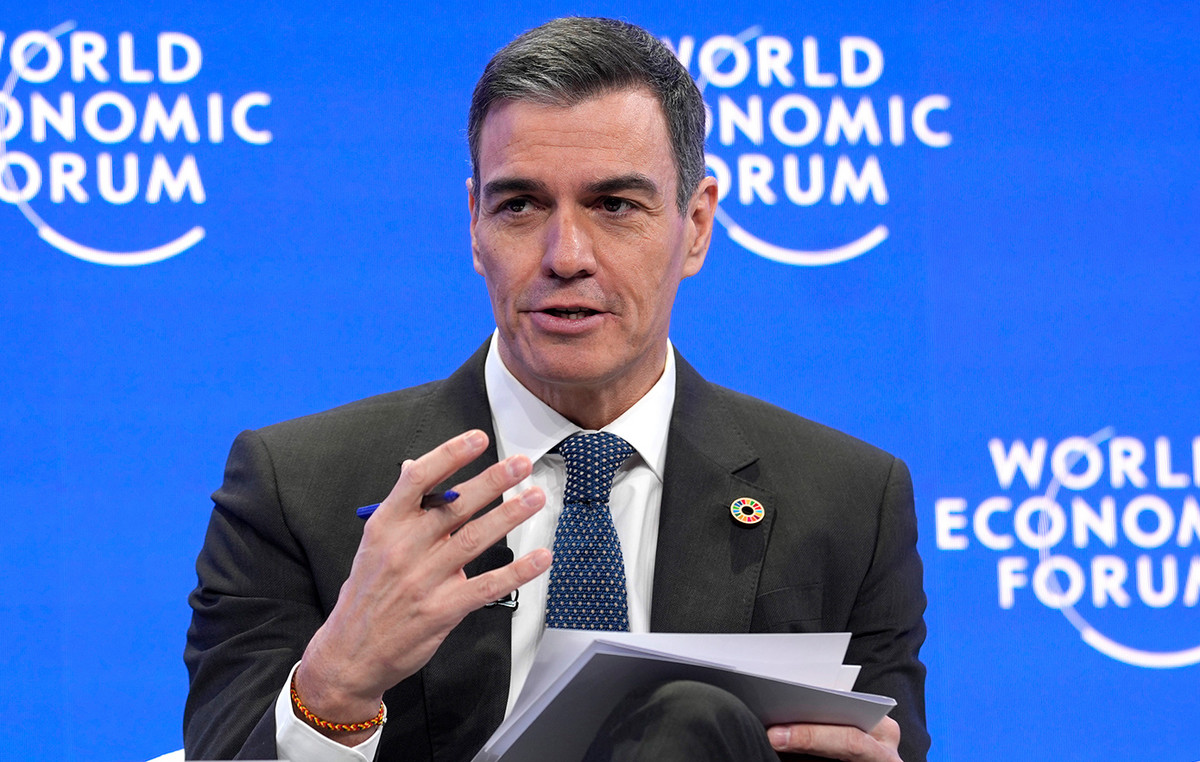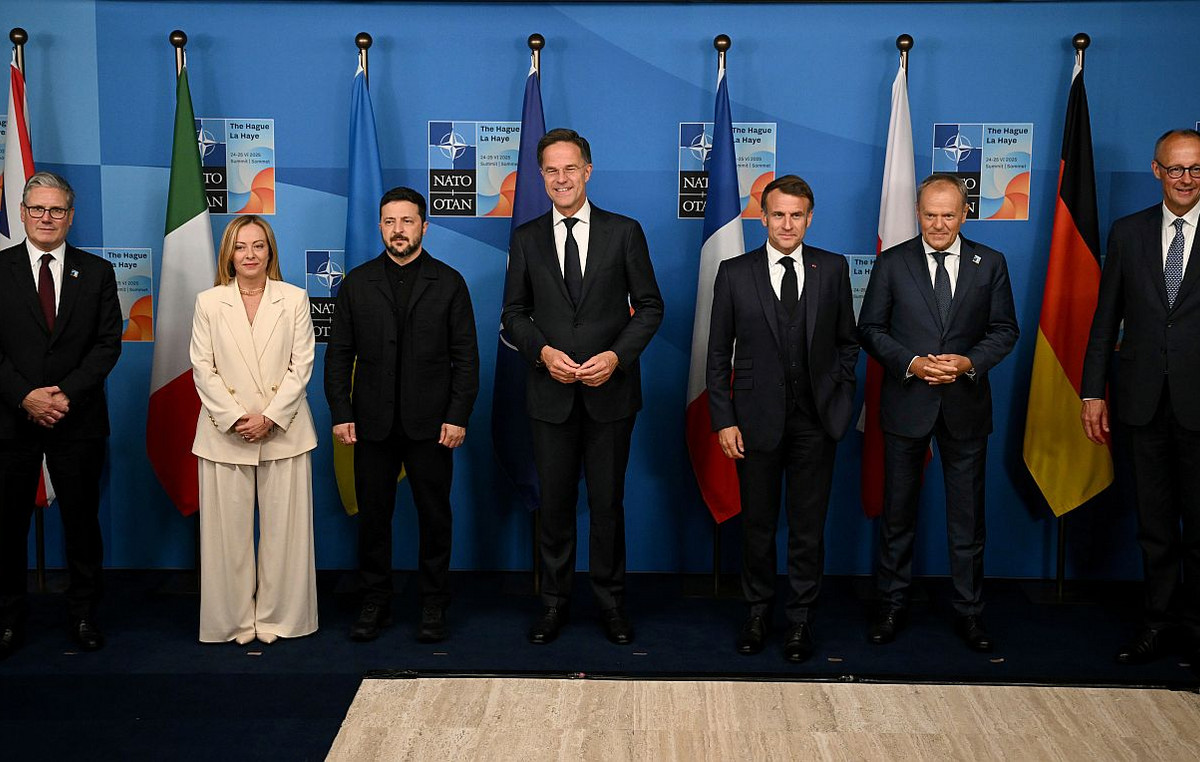- The Dollar falls 0.23% on the day against the Chilean Peso, remaining within the operating range of the previous session.
- Copper loses 0.31% daily, reaching lows in more than two months.
- Inflation in the United States stands at 2.6%, in line with analyst estimates.
USD/CLP set a day’s high at 985.91, attracting sellers who took the cross to a day’s low at 978.69. At the time of writing, USD/CLP is trading above 983.53, losing 0.23% today.
The Chilean peso reacts to the rise after the publication of US inflation
Copper maintains its bearish outlook and signs its fourth consecutive session with losses, registering a 0.31% drop today, reaching lows not seen since September 11 at $4.1092 per pound.
On the other hand, the Chilean peso has gained traction after the US annualized inflation was released, which stood at 2.6% in October, in line with market consensus.
Investors will be attentive to the statements of Jerome Powell, Chairman of the Federal Reserve, at the market close.
Technical levels in the USD/CLP
USD/CLP maintains the bullish outlook after forming short-term support at 940.90, given by the October 24 low and close to the 50% Fibonacci retracement. The next key support zone is at 894.25, the September 30 pivot point.
To the north, we see the key resistance zone at 990.40, the high of February 26 and April 16, forming a double top pattern. The Relative Strength Index is at 71.87, showing buying dominance in the short term.
USD/CLP Daily Chart

The US Dollar FAQs
The United States Dollar (USD) is the official currency of the United States of America, and the “de facto” currency of a significant number of other countries where it is in circulation alongside local banknotes. According to 2022 data, it is the most traded currency in the world, with more than 88% of all global currency exchange operations, equivalent to an average of $6.6 trillion in daily transactions. After World War II, the USD took over from the pound sterling as the world’s reserve currency.
The single most important factor influencing the value of the US Dollar is monetary policy, which is determined by the Federal Reserve (Fed). The Fed has two mandates: achieve price stability (control inflation) and promote full employment. Your main tool to achieve these two objectives is to adjust interest rates. When prices rise too quickly and inflation exceeds the 2% target set by the Fed, the Fed raises rates, which favors the price of the dollar. When Inflation falls below 2% or the unemployment rate is too high, the Fed can lower interest rates, which weighs on the Dollar.
In extreme situations, the Federal Reserve can also print more dollars and enact quantitative easing (QE). QE is the process by which the Fed substantially increases the flow of credit into a clogged financial system. This is an unconventional policy measure used when credit has dried up because banks do not lend to each other (for fear of counterparty default). It is a last resort when a simple lowering of interest rates is unlikely to achieve the necessary result. It was the Fed’s weapon of choice to combat the credit crunch that occurred during the Great Financial Crisis of 2008. It involves the Fed printing more dollars and using them to buy US government bonds, primarily from financial institutions. QE usually leads to a weakening of the US Dollar.
Quantitative tightening (QT) is the reverse process by which the Federal Reserve stops purchasing bonds from financial institutions and does not reinvest the principal of maturing portfolio securities in new purchases. It is usually positive for the US dollar.
Source: Fx Street
I am Joshua Winder, a senior-level journalist and editor at World Stock Market. I specialize in covering news related to the stock market and economic trends. With more than 8 years of experience in this field, I have become an expert in financial reporting.







